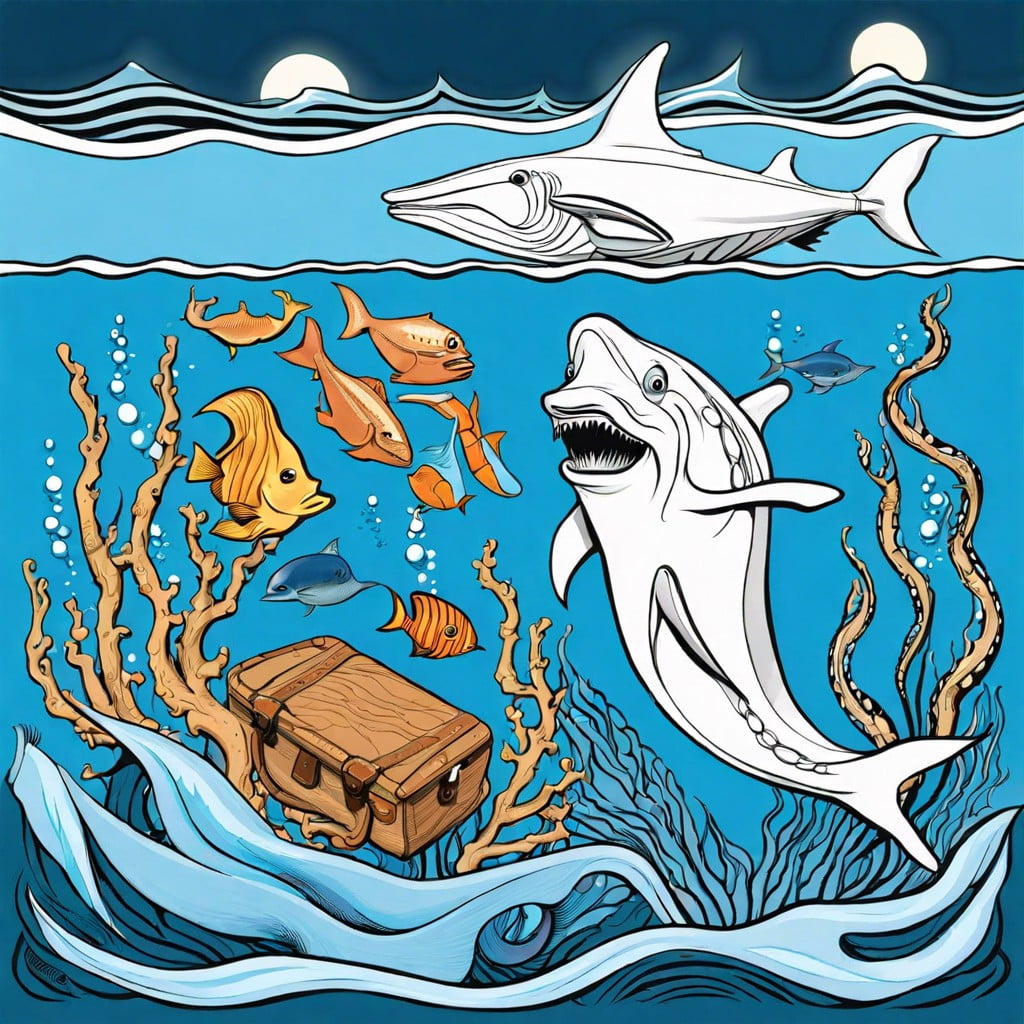Learn about upwelling, a fascinating oceanographic phenomenon that brings nutrient-rich waters to the surface, supporting marine ecosystems and influencing global climate.
Key takeaways:
- Wind blows parallel to the coastline.
- Surface water moves away due to wind force.
- Cold, nutrient-rich water rises to replace it.
- This nutrient-loaded water supports high primary productivity.
- Upwelling zones impact climate, regulate temperatures, and support fisheries.
Mechanisms

Water likes to show off its dance moves, and upwelling is one of its flashiest routines. When the wind blows parallel to the coast, it pushes the surface water away. Like a magic trick, the deeper, colder water takes its place, moving upwards. But it’s not just any old water; it’s packed with nutrients.
Here are the key points:
- Wind blows parallel to the coastline.
- Surface water moves away due to wind force.
- Cold, nutrient-rich water rises to replace it.
- This nutrient-loaded water supports high primary productivity.
So, next time you’re at the beach, remember there’s a whole underwater conga line happening just beneath the surface.
Types
There are a few different varieties, each with its own unique twist.
First, we have coastal upwelling. This one’s a bit of a big deal, especially for marine life. When winds blow parallel to coastlines, they push warm surface waters away, letting that delicious, nutrient-rich cold water rise up like it’s winning an aquatic elevator race.
Next up, equatorial upwelling. The Earth likes to show off here. Trade winds along the equator blow in opposite directions on either side, pulling surface water apart like a magical oceanic tug-of-war, allowing cooler water to come up for a breath of fresh air.
Lastly, let’s not forget about oceanic upwelling. Think of it as the deep sea’s way of mixing things up on a large scale. This type happens in the open ocean and isn’t tied down to coastlines or the equator.
Each type serves as nature’s own fertilizer, turning underwater deserts into thriving oases. It’s like nature’s very own version of a farm-to-table movement, but with fish and phytoplankton.
High Productivity
When we talk productivity, Amazon’s got nothing on upwelling zones. These watery regions are like Mother Nature’s very own farmer’s market.
First off, the nutrient supply here is off the charts. Upwelling brings nutrients from the ocean depths to the surface, where sunlight can fuel the frenzy of growth. Think of it as an all-you-can-eat buffet for microscopic plants known as phytoplankton.
And where there’s phytoplankton, there are fish. Lots and lots of fish. Small fish, big fish, and fish that love to photobomb your vacation pics. These tiny plant-like organisms are essentially the first link in the oceanic food chain. The more phytoplankton, the more food for all the critters up the chain, from sardines to sharks.
Then comes a little something called fishery hotspots. Countries love these zones because they are prime spots for commercial fishing. Broccoli fields of the sea, if you will, except tastier—with less chewing required.
Last but not least, biodiversity gets a serious boost. The rich feeding grounds support a mind-boggling variety of marine life. It’s like a giant aquarium out there, but without the creepy, nose-print-covered glass.
So next time you’re enjoying that seafood platter, remember to give a little nod to upwelling. It’s the unsung hero responsible for keeping our oceanic grocery aisles stocked and thriving.
Threats to Upwelling Ecosystems
Pollution poses a significant hazard. Chemicals and plastics from land can flow into oceans, disrupting delicate marine environments. Imagine you’re a fish, and suddenly, your living room is filled with plastic bags. Not fun.
Climate change is another biggie. Rising ocean temperatures can alter upwelling locations and intensity. Think of it as rearranging the furniture in your home without asking—everything’s out of whack.
Overfishing is also a culprit. When we take too many fish, the entire food web suffers. It’s like removing random pieces from a Jenga tower—eventually, the whole thing tumbles down.
Lastly, coastal development can limit the spaces where upwelling occurs. Construction and habitat destruction make it hard for these systems to thrive, like building a theme park in your backyard, scaring away the birds.
Effect On Climate
Alright, let’s talk climate. Upwelling zones can have a big impact on our planet’s weather system. They play a major role in regulating sea surface temperatures, which in turn affects global climate patterns.
For starters, upwelling brings cold, nutrient-rich water to the surface. This cooling effect can influence the formation of fog and weather patterns local to the coastline. Imagine that: your coastal barbecue being interrupted by marine science.
Additionally, the nutrients from upwelling boost plankton growth. Why should you care about tiny, floating organisms? Because they absorb carbon dioxide during photosynthesis, taking a bite out of global warming.
Lastly, upwelling areas often support massive fisheries. While this isn’t a climate effect per se, the sheer abundance of life indirectly influences oceanographic studies focused on climate models.
And there you have it: upwelling, your unsung climate hero, doing its bit to keep our planet in check. And your weekend plans dramatically fog-free.